Tea Statistics – By Country, Region, Type, Demographic, Consumption, Revenue in the US, Sales Channel
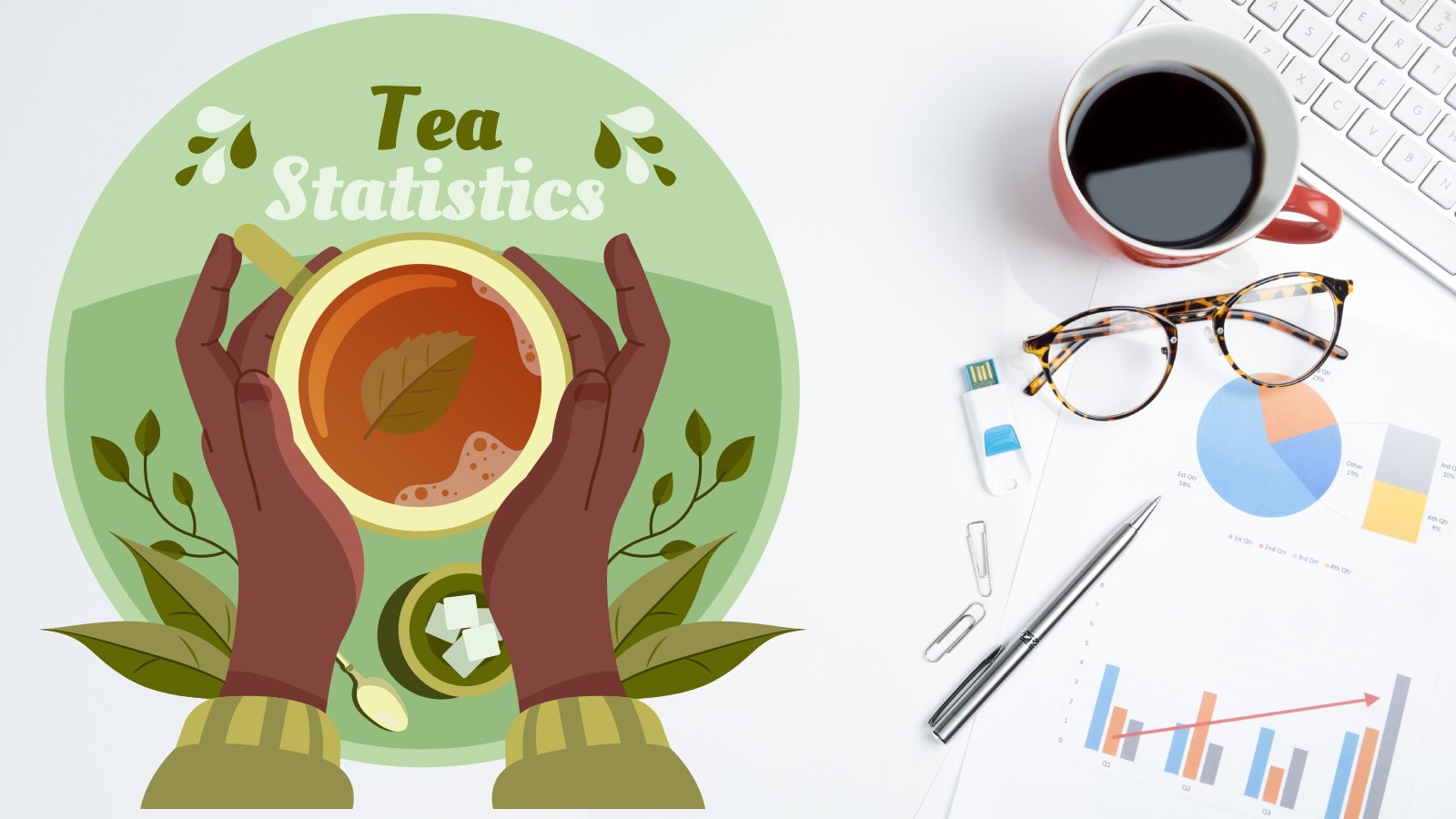
Page Contents
- Introduction
- Editor’s choice
- What includes Tea?
- Types of Teas
- Benefits of drinking tea
- Side effects of drinking excessive tea
- Tea Facts
- General Tea Statistics
- Tea Statistics by Reasons for Drinking
- Tea Statistics by Type
- Tea Statistics by Country
- Tea Statistics by Region
- Tea Statistics by Demographic
- Tea Statistics by sales channel
- Tea Statistics by Consumption
- Tea Statistics by Revenue in the US
- Tea Statistics by Brands as of May 2022
- Conclusion
Introduction
Tea Statistics: Who does not love to drink tea? Tea is the second most consumed beverage in the world. Tea provides energy to the body and is comparatively easy to make and drink. The global tea industry has already started earning billions.
These mouth-watering Tea Statistics are written with recent insights from around the globe along with a list of top brands bagging their yearly sales at the end.
Editor’s choice
- In the year 2023, it is projected that the worldwide production of black tea will grow by 2.9% resulting in 4.17 tons of tea.
- According to Tea Statistics, flavored tea is 30% less popular in countries such as Australia, the United States of America, Singapore, and China.
- On the country average, in the United States of America, around 85 billion tea servings were made resulting in 39 billion gallons of tea.
- After water, Tea is the second largest consumed beverage on the global average.
- In the United States of America, only 15% to 20% of households drink hot tea.
- According to the Tea Statistics, the global Tea Market is projected to grow at a CAGR of 4.22% between 2023 to 2025.
- Bubble tea is the most popular beverage in Southeast Asia, more specifically in the Thai community.
- As of 2023, in the global view, the average volume per person is expected to amount 0.92Kg.
- By the year 2025, 52% of spending and 5% of volume consumption will be generated from out-of-home tea consumption i.e., in restaurants, bars, etc.…
- The global comparison of the Tea Market, the highest revenue projected to generate in China in the year 2023 resulting in $111,800 million.
What includes Tea?
Tea is mostly referred to as an aromatic beverage. It is easy to make a beverage and requires ingredients such as water, milk, sugar, and tea powder. As of today, there are unlimited types of tea available globally. Tea is the most common beverage found in restaurants as well as on the street shops. Well, drinking tea can be addictive and has some side effects if consumed more than necessary.
Types of Teas
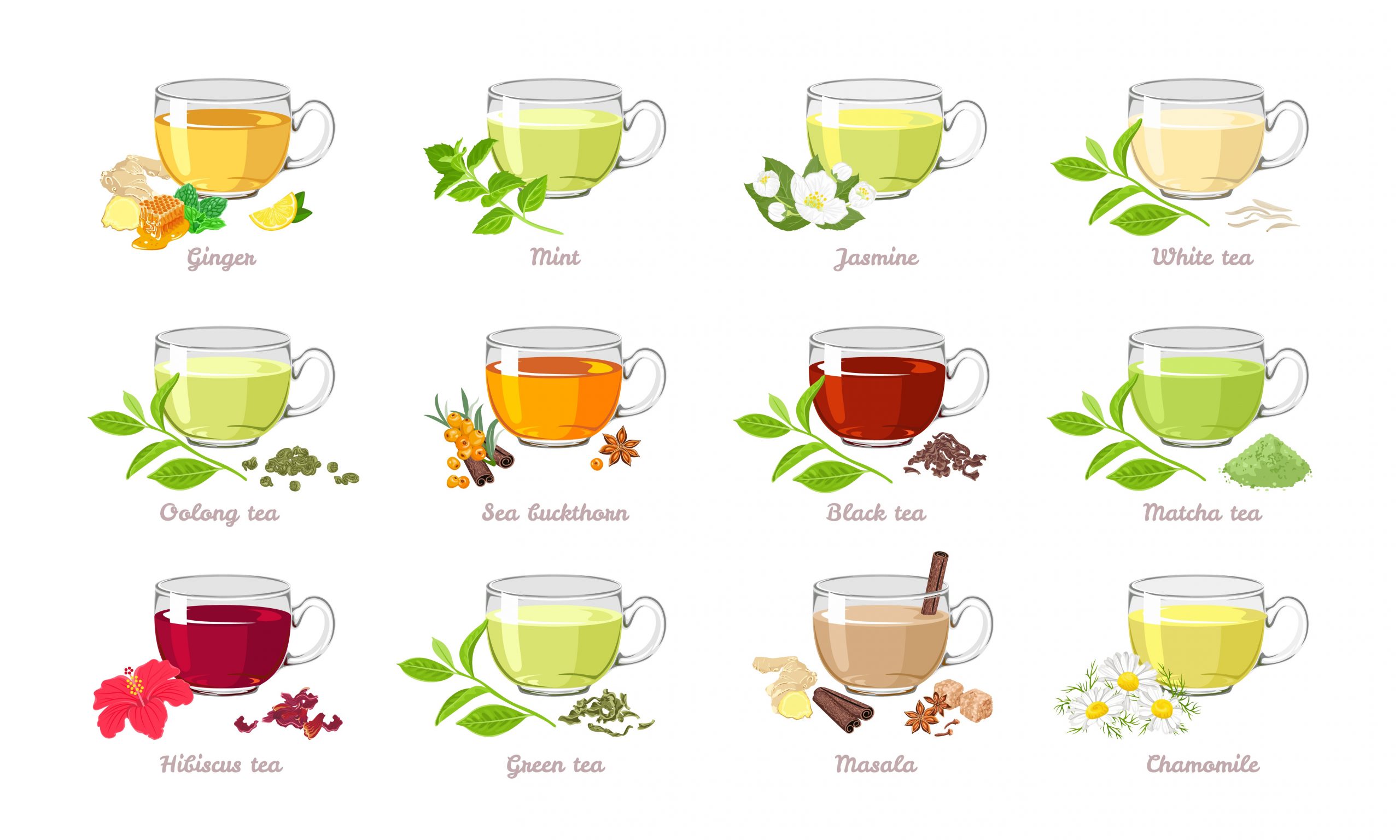
Benefits of drinking tea
- Healthy types of tea can help to reduce weight.
- Increases energy levels in the body.
- Freshen up the mind.
- Tea can regulate blood sugar levels.
- Support mental health issues.
- Helps to improve digestion problems.
- Improve heart health.
Side effects of drinking excessive tea
- Creates pregnancy complications.
- A feeling of nausea.
- Continuous Heartburn.
- Uneven in the sleep cycle.
- Reduction in iron absorption.
- And increase in the feeling of stress, restlessness, and anxiety.
Tea Facts
- Americans still make tea on stove-top kettles.
- If consumed more than necessary, tea is harmful to health.
- Tea is around 5,000 years old, discovered in 2737 BC by a Chinese emperor Shen-Nung (The Divine Healer).
- The majority of the tea consumed by the world is grown in mountain areas, 3,000 to 7,000 feet above sea level in major countries such as Taiwan, Vietnam, Kenya, Malawi, China, India, Argentina, Sri Lanka, Tanzania, and Indonesia.
- Anna, the Duchess of Bedford, invented the habit of drinking afternoon tea in 1840 as she started drinking tea with a light snack at 4:00 pm.
- Drinking tea at a regular level has a lower risk of Parkinson’s disease.
- Tea is rehydrating.
General Tea Statistics
- Around the world, there are more than 1000 different varieties of tea.
- On average of lifetime period, a person spends around $16,500 on tea consumption.
- A British tea consumer drinks 265 liters of tea a year.
- As of 2021, Lipton Pure Leaf became a top-selling ready-to-drink tea in the United States of America, as it generated a sale of more than $900 million.
- According to Tea Statistics, more than 87% of millennials drink tea, resulting in 4 out of 5 tea consumers.
- Tea Statistics state that, in 2021, on the country average of the United States of America, around 85 billion tea servings were made resulting in 39 billion gallons of tea.
- After water, Tea is the second largest consumed beverage on the global average.
- As of today, China ranks top on the list of global tea production.
- Every day, 3 billion cups of tea are consumed around the globe.
- 48% of tea drinkers consume tea at restaurants and other food service locations in the United States of America.
- Tea Statistics further state that tea is preferred to coffee.
- Furthermore, by the year 2029, the sale of tea through online distribution channels is expected to grow at a CAGR of 5.9%.
- Tea Statistics of the global volume of consumption state the year-wise rate as: 6,897.9 million kilograms (2022), 7,123.2 million kilograms (2023), 7,274.6 million kilograms (2024), and 7,442.8 million kilograms (2025).
- As of today, around 13 billion people are employed in the tea industry around the globe.
- Every year, 5,966,467 tones of tea are produced.
- China and India collectively produce 60% of the world’s total production rate.
- Every day, more than 159 million Americans consume tea.
- 40% of people in India buy tea at convenience stores.
- Every year, Tea Statistics state that, in the United States of America around 519 million pounds of tea is imported.
- Every morning, 2 billion people drink tea.
- Around the world, 80% of homes have at least one type of tea.
- 25% of Americans drink at least two cups of tea every day, while 44% of people drink more than 2 times a day.
Tea Statistics by Reasons for Drinking
- 57% of people drink tea because it tastes good.
- 56% of people drink tea because it is relaxing.
- 47% of the tea consumer said, it is easy to prepare and
- 41% of the people agreed to drink tea is healthy.
Tea Statistics by Type
- In the year 2023, it is projected that the worldwide production of black tea will grow by 2.9% resulting in 4.17 tons of tea.
- Similarly, the global production of green tea will grow at 8.2% reaching 2.97 million tons.
- 80% of tea drinkers in the United States of America consume iced tea.
- As of today, 90% of the people in the United States of America drink black tea.
- In the United States of America, only 15% to 20% of households drink hot tea.
- Bubble tea is the most popular beverage in Southeast Asia, more specifically in the Thai community.
- In Southeastern Asia, a person drinks three cups of bubble drinks on a daily average while, in the Philippines, around 5 cups of bubble tea on daily basis is the average of consumption.
- According to Tea Statistics, flavored tea is 30% less popular in countries such as Australia, the United States of America, Singapore, and China.
- Green is more consumed by women than men considering the health benefits specifically related to women.
- The most popular type of tea in Japan and China is Oolong tea, which is a mixture of green and black tea.
- According to Tea Statistics, Black tea is expected to capture the maximum market resulting in 42.5% by 2027.
- Between 2022 to 2029, the global Green tea market is expected to grow at a CAGR of 9.8%.
- Ready-to-drink tea has captured 76.2% of the total revenue share.
- The top 5 world’s biggest Green tea drinkers reside in China, Hong Kong, Taiwan, the Middle East, and Japan.
- People who drink black tea have 44% less risk of a heart attack.
- People who consume green tea at least six cups a day are 33% less likely to get diagnosed with diabetes.
- Green tea can reduce the risk of kidney stones by 8%.
- Green tea can burn calories by 4%.
Tea Statistics by Country
By Production

(Source: atlasbig.com)
- China has ranked top by producing 2.414.802 tons of tea with a 1,732 kg production per person.
- India and Kenya ranked respectively with a total production of 1,252.174 tons and 473.00 tons each.
- Other countries on the list are Sri Lanka – 349,308 tons (16,289Kg per person), Turkey– 243,000 tons (3,007 kg per person), Vietnam – 240,000 tons (2,535 Kg per person), Indonesia – 144,015 tons (0,543 Kg per person), Myanmar – 102,404 tons (1,901 Kg per person), Argentina – 89,609 tons (2,014 Kg per person), and Japan – 80,200 tons (0,634 Kg per person).
By Consumption
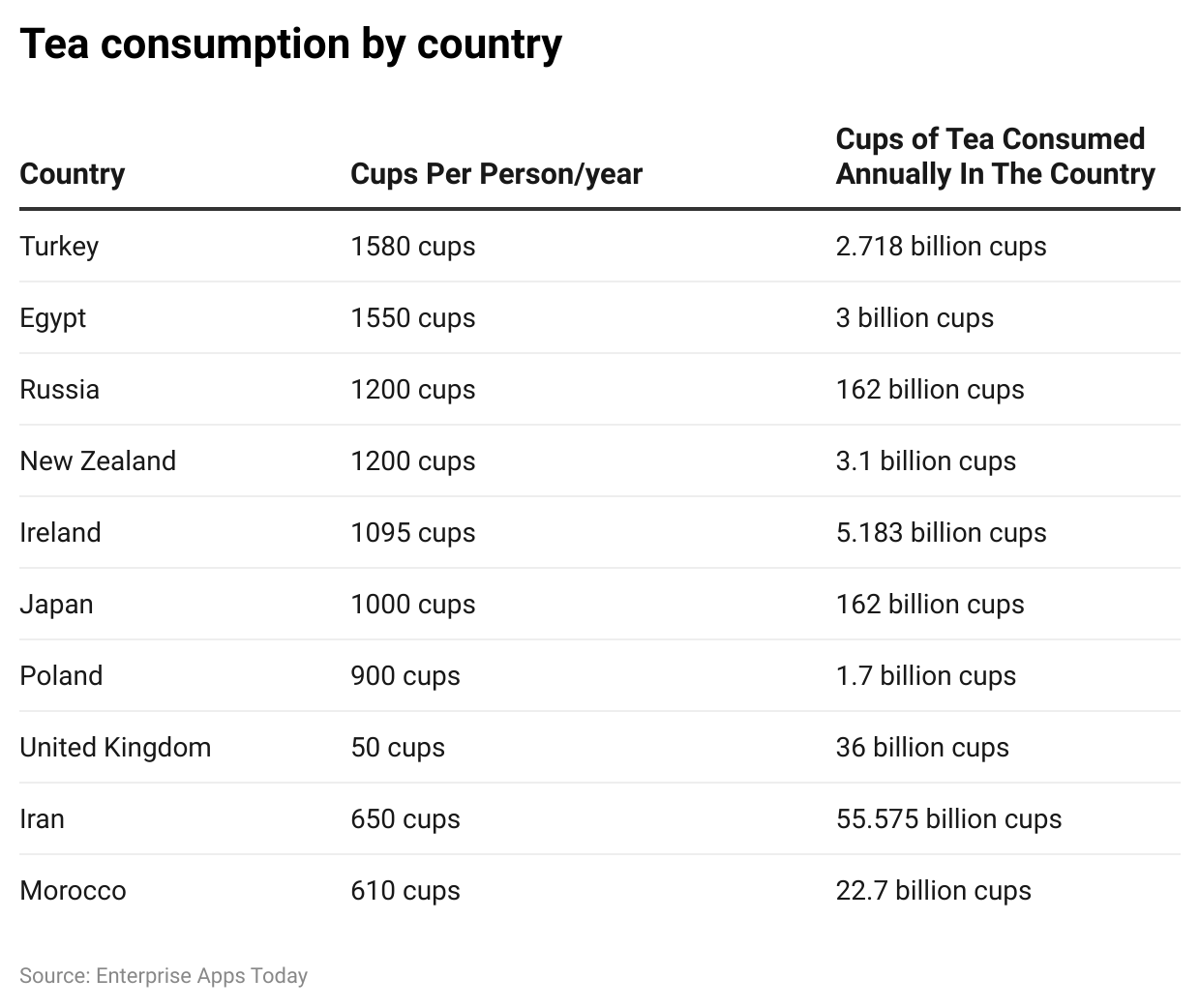
(Reference: steepedcontent.com)
- The above-mentioned are the top 10 tea consumption countries measured in consumed cups of tea.
- Turkey has the highest number of cups per year for each person resulting in 1580 and annually, 2,718 cups are consumed in the country.
- Other countries are also ranked respectively with billions of consumed cups in a year.
Tea Statistics by Region
Worldwide
- The worldwide revenue of the Tea segment as of 2023 amounts to $247.20 billion, this has seen a change of 12% as compared to last year.
- According to the Tea Statistics, the global Tea Market is projected to grow at a CAGR of 4.22% between 2023 to 2025.
- The global comparison of the Tea Market, the highest revenue projected to generate in China in the year 2023 resulting in $111,800 million.
- Per person revenue in the Tea segment as of 2023 is $32.18.
- Furthermore, Tea Statistics state that, by the year 2025, 52% of spending and 5% of volume consumption will be generated from out-of-home tea consumption i.e., in restaurants, bars, etc.…
- By the year 202, the global Tea market is expected to grow at CAGR 2.5% amounting to 7.44 billion kg by the year 2025.
- As of 2023, in the global view, the average volume per person is expected to amount 0.92Kg.
Americas
- In 2023, the average volume per person in America is expected to be 0.85kg.
- Compared to the overall population, per-person revenue in 2023 is expected at $34.63.
- Moreover, by the year 2025, the volume is expected to amount to 880.50 million kg.
- With a global comparison, the American tea market is expected to grow at CAGR of 4.71% between 2023 to 2025.
- As of 2023, the revenue in the tea segment amount to 35.04 billion.
- The out-of-home consumption will be contributing 62% of spending and 8% of volume consumption by 2025.
- As of 2023, the revenue of the Tea segment is $35.04 billion with a change in revenue of 12.5%.
Africa
- In the African segment, the Tea Statistics state that the average volume per person is expected to amount to 0.68 Kg in the year 2023.
- Moreover, by 2025, the volume is expected to amount to 962.80 million kg.
- As of 2024, it is projected that the Tea segment will grow at a CAGR of 5.9%.
- By the year 2025, the out-of-home spending and volume consumption will result in 19% and 2% respectively.
- The revenue generated from the tea segment is 15.28 billion as of 2023 and is expected to grow at CAGR of 6.34% between 2023 to 2025.
- In the African region, the tea segment states the per person revenue at $12.16 as of 2023.
- As of 2023, the change in the revenue of the Tea market in Africa has been observed at 15.2%.
Europe
- The Tea Market in the European region is projected to grow at CAGR of 4.08% between 2023 to 2025.
- As of 2023, the segment amounts to $19.92 billion.
- In Europe, the average volume per person is projected at 0.81kg as of 2023. Moreover, the per-person revenue as of 2023 is generated at $23.46.
- By the year 2025, 51% of spending and 6% of volume consumption will be from out-of-home consumption.
- By 2025, it is expected that the Tea segment will amount to 708.70 million kg in Europe and therefore, by 2024, it is expected to generate a volume growth of 1.5%.
- As of 2023, the revenue in the European region is $19.92 billion with a change of 17.3% compared to last year.
Asia
- By 2025, the tea market is expected to amount to 4.87 billion kg. Therefore, expected volume growth of 2.3% by 2024.
- The average volume per person is projected at 1.03kg in 2023.
- In the Asian region, according to Tea Statistics, per-person revenues in 2023 generated $38.78.
- The projected out-of-home consumption will be contributed to 54% of spending and 4% of volume consumption by 2025.
- As compared to last year, the revenue change of the Tea Market in Asia is 11.1% valued at $175.40 billion.
Tea Statistics by Demographic
- 53 % of Tea drinkers are women; 47% are men
- Most tea drinkers are between the ages of 30-39
- 14% of tea drinkers are 20 or under
- 19% of tea drinkers are 20-29
- 23% of tea drinkers are 30-39
- 13% of tea drinkers are 40-49
- 13% of tea drinkers are 50-59
- 18% of tea drinkers are 60+
(Source: steepedcontent.com)
- Considering the Tea Statistics by demographics, 53% of the drinkers are women and 47% are men.
- Collectively out of these tea lovers, 14% are below the age of 20.
- 19% of the tea consumers belong to 20 to 29 years.
- The highest number of tea drinkers belong to 30 to 39 years resulting in 23%.
- Moreover, there are 13% of tea drinkers from the age groups of 40 to 49 years and 50 to 59 years respectively.
- Moreover, 18% of tea drinkers are 60 years and above.
Tea Statistics by sales channel
Online and Offline
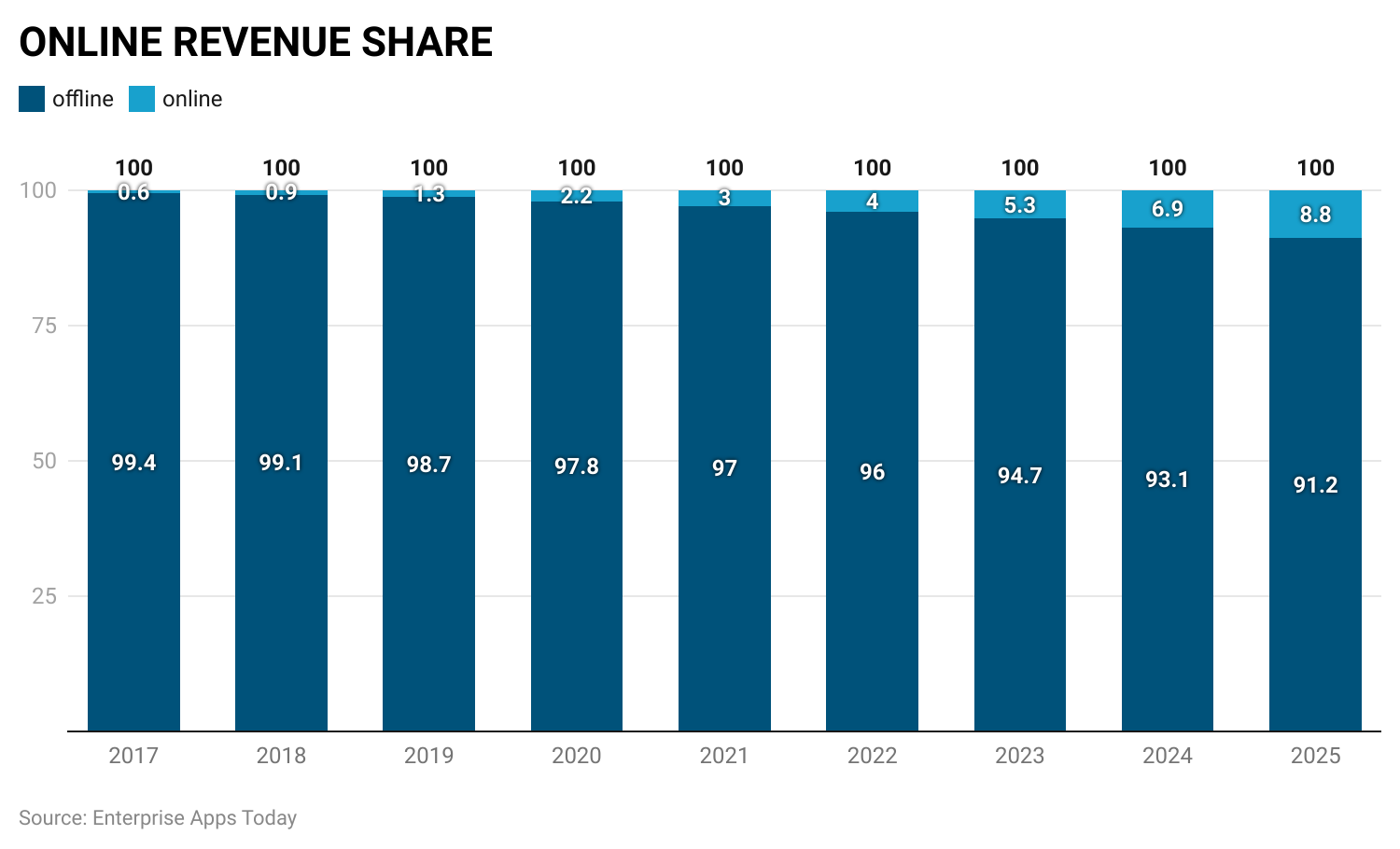
(Reference: statista.com)
Tea Statistics by Consumption
By Location
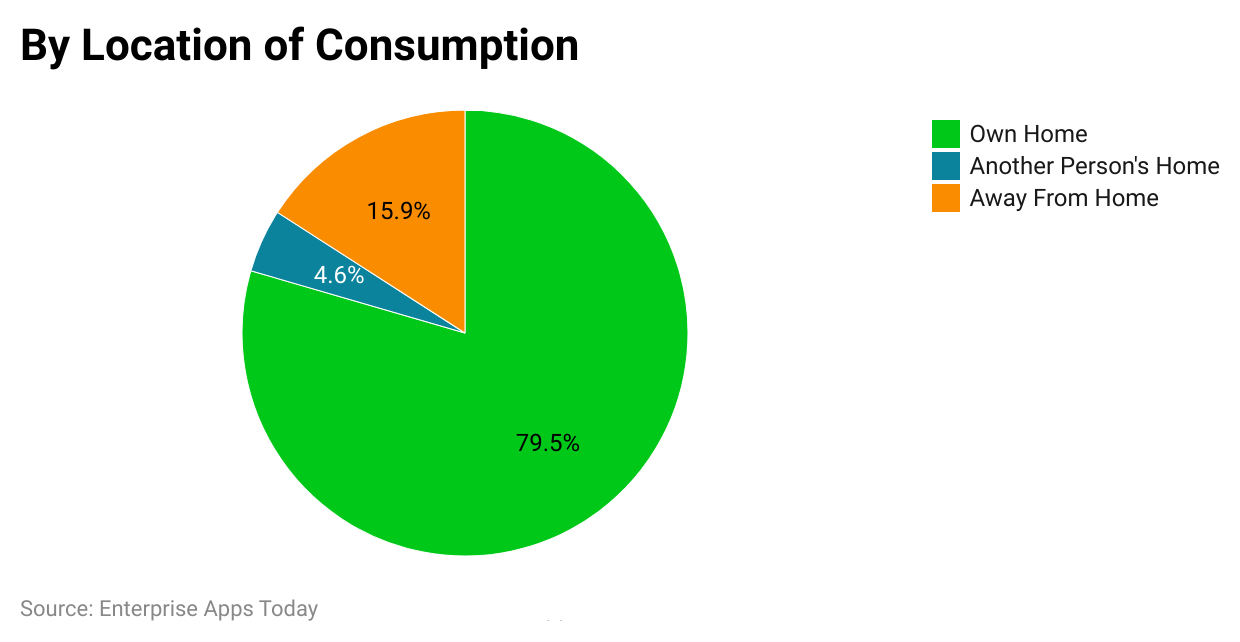
(Reference: teausa.org)
- The demographic summary of Tea Statistics resulted in 79.5% of people drinking tea at their own homes, while 4.6% drank at another person’s home.
- And around 15.9% of people drank tea away from home.
By The Time of the Day
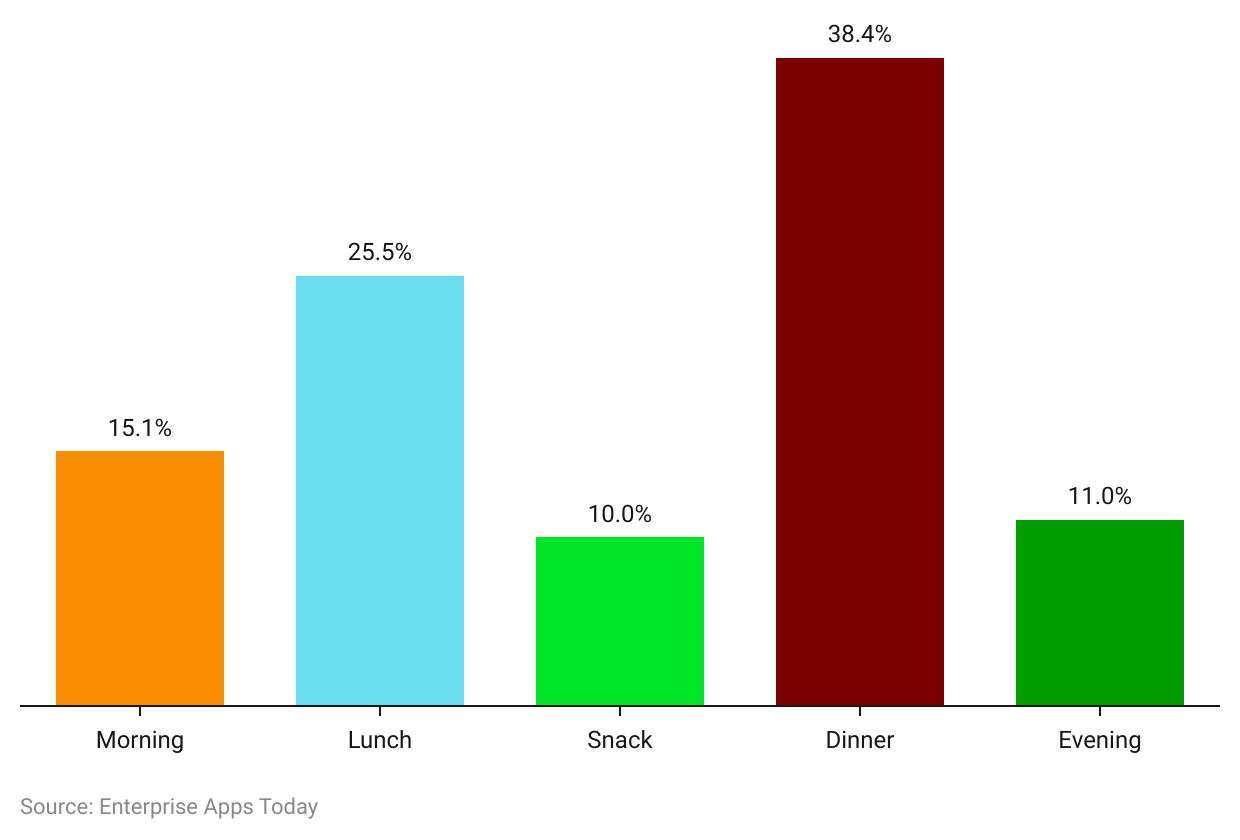
(Reference: teausa.org)
- Around the globe, 15.1% of tea consumers drink tea in the morning, while 25.5% drink it during lunchtime.
- There are only 10% of people drink tea during snacks.
- The highest number of people drink tea during dinner time resulting in 38.4%.
- 11% of people drink tea during the evening time.
Tea Statistics by Revenue in the US

(Reference: statista.com)
Considering the revenue received from the sale of tea, Tea Statistics state that, over the past 10 years, tea consumed outside of the home has continuously gained the highest number of revenues as compared to the tea at home. Even though, both of the related revenues fell during COVID-19, eventually started increasing in the following years.
By Average Revenue Per Capita
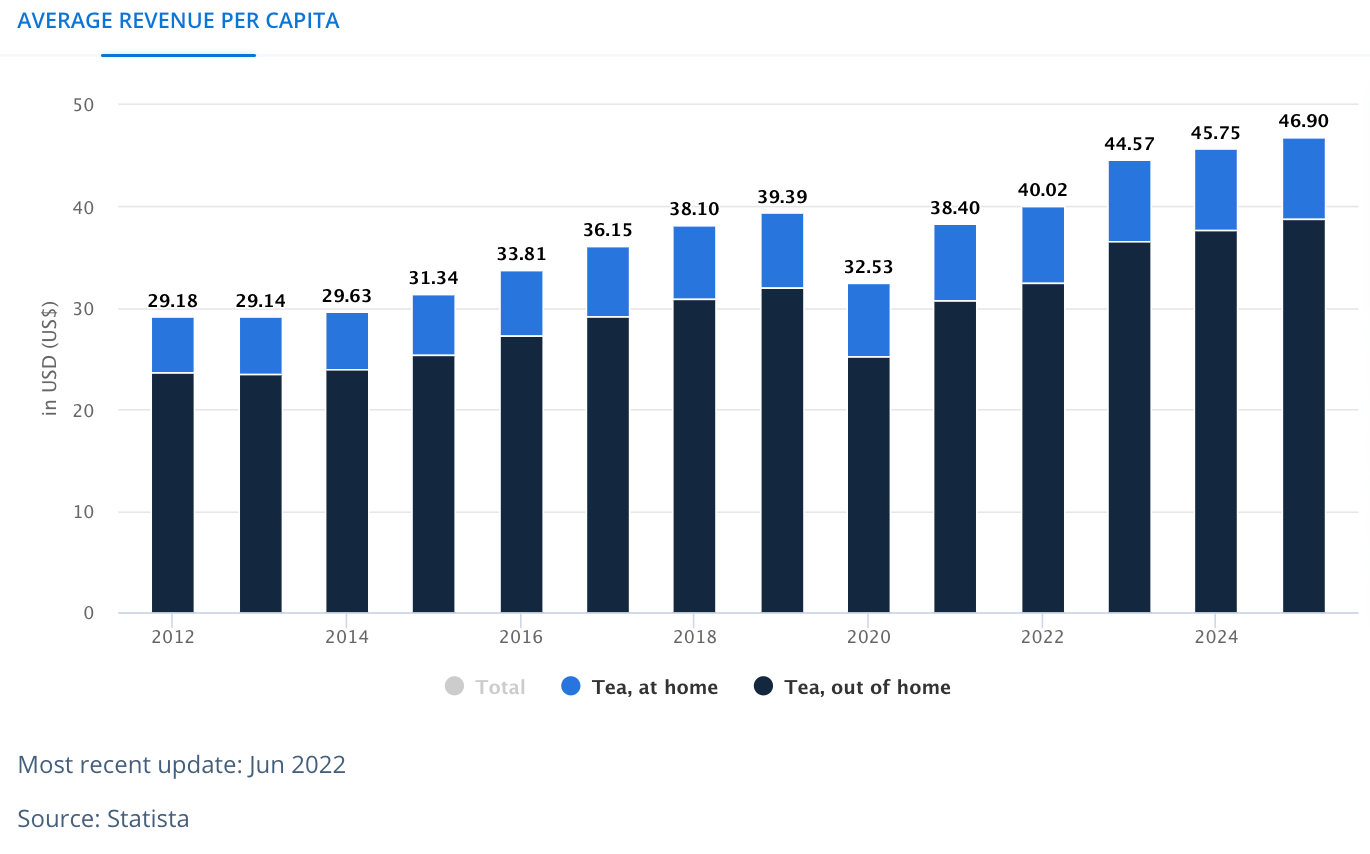
(Reference: statista.com)
Considering the average revenue per capita in the United States of America, it was at an increased level for the past 10 years, but as COVID-19 caused the world shut down to $32.53, as we are entering into more progressive years, it can be seen that the frequency of drinking tea at home and outside of the home is rapidly increasing.
Tea Statistics by Brands as of May 2022
By Top Refrigerated Tea Brands
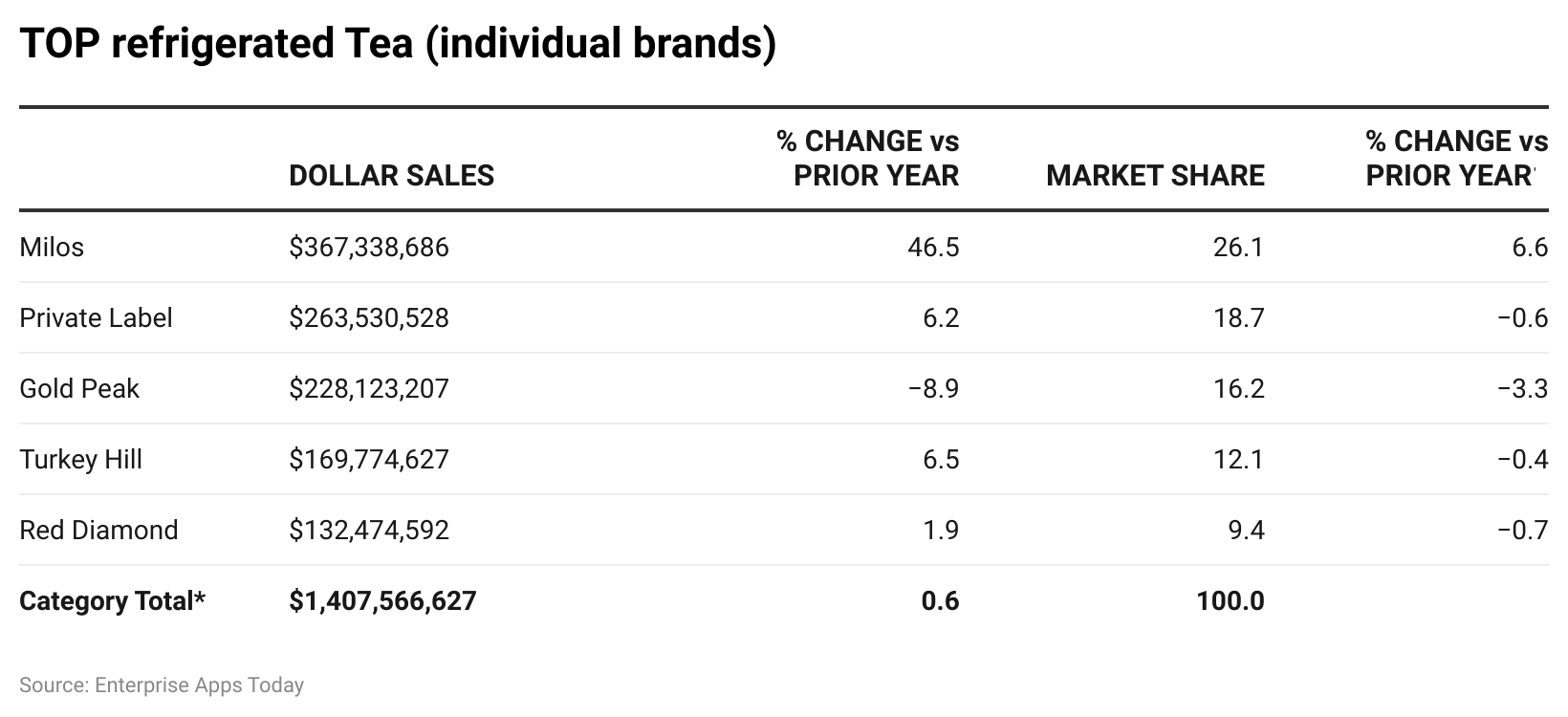
(Reference: bevindustry.com)
Top Loose-leaf and Bagged Teas
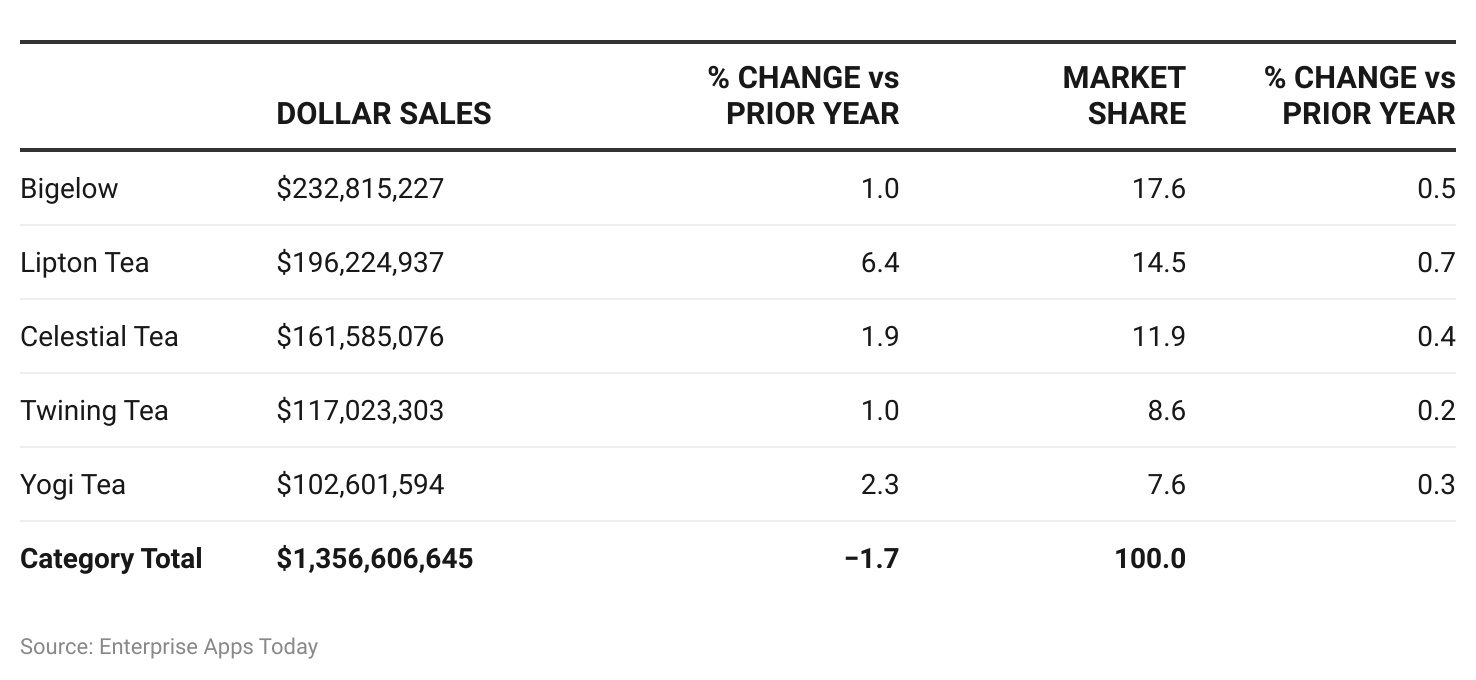
(Reference: bevindustry.com)
Top Canned and Bottled Teas
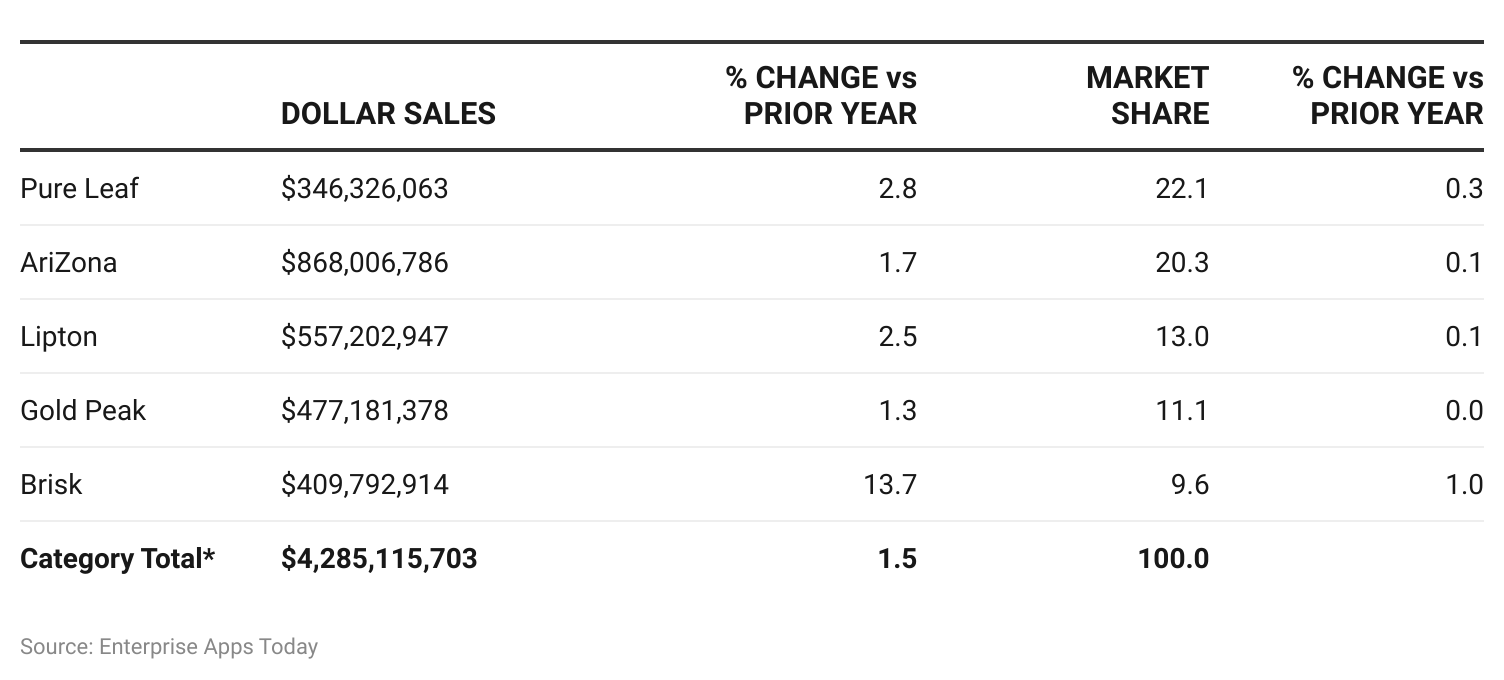
(Reference: bevindustry.com)
Conclusion
These mouth-watering Tea Statistics made me order bubble tea online at the end of the writing session. It is wonderful to have different types of flavorful tea available today. Tea is the most affordable energy drink found in any part of the world and helps you to refresh your mind within seconds. I was wondering if you are also looking forward to making a cup of tea for yourself and getting comfy in bed.
Sources
FAQ.
Tetley (Tata Global Beverages), Taetea Group, The Republic of Tea, Dilmah, Bamatea, Twinings (ABF), Tieguanyin Group, Lipton (Unilever), Tazi (Unilever), Chinatea, and Yorkshire Tea are some of the top players in the tea market today globally.
Yes, specifically, the demand for herbal and green tea increased during this period.
- Turkey 2.Ireland 3.United Kingdom 4. Iran 5. Russia 6.Morocco 7.New Zealand 8. Chile (South America) 9.Egypt and 10. Poland are the top 10 countries that drink tea the most.
Now a day, there are different types of tea around the world. Moreover, flavors such as Orange, Pomegranate, Lemon, Mint, and Cranberry are some of the trending tea flavors in the global tea market

By conducting scientific research, I write about illness, health and healthcare. As a professional medical writer, my experience includes creating feature articles for newsletters and websites as well as research news stories for doctors and researchers. Reading has been an integral part of me since childhood - I'm fan of "Friends" and the "Harry Potter series". Before this career, I was employed by a French multinational company. However, my passion for reading led me to pursue writing professionally; my first Amazon-published short story entitled "The envelope that changed our lives" has recently been released. In my free moments, I enjoy long bike rides around town.